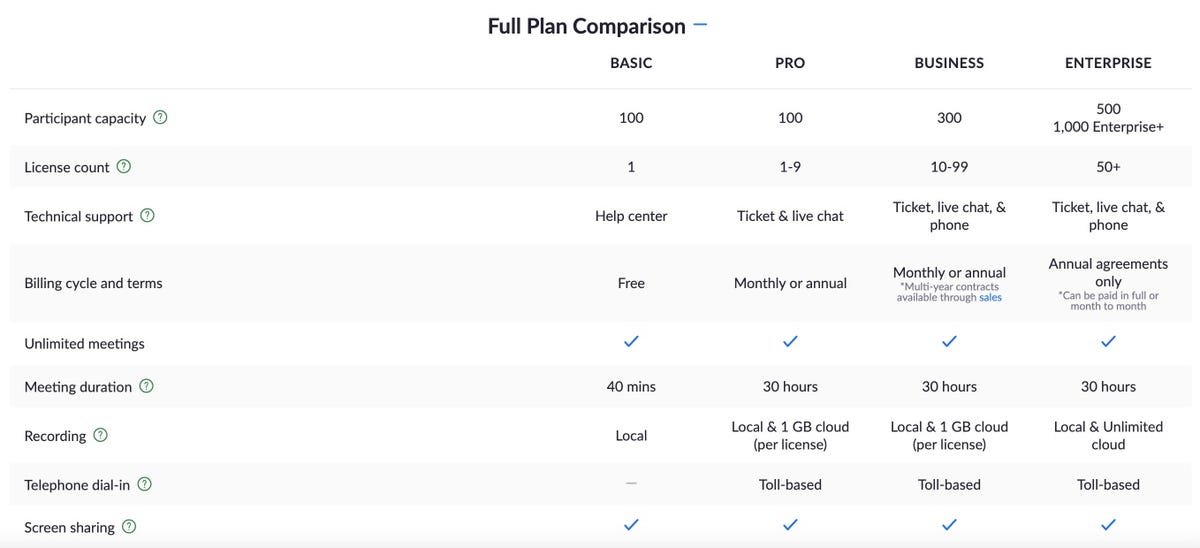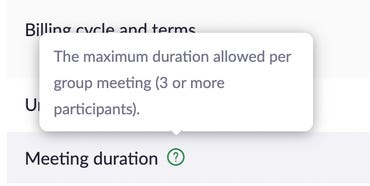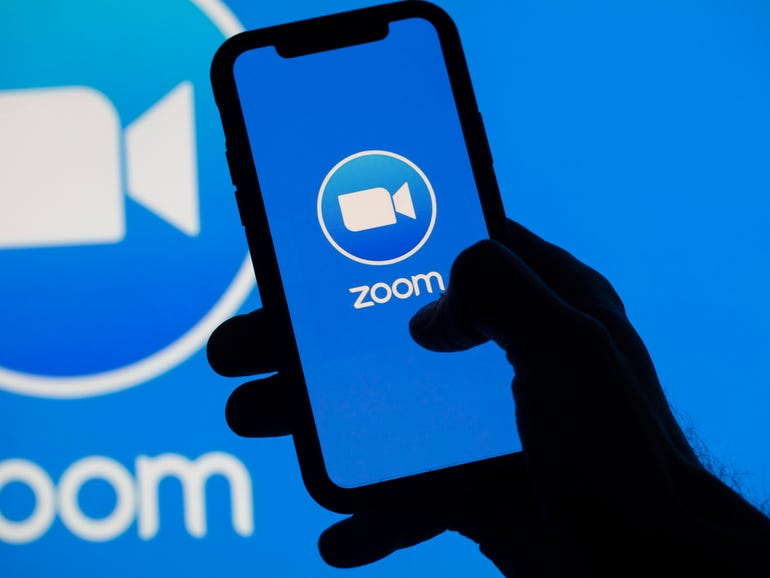Is it time to stop paying for Zoom?
With inflation pushing against our wallets, one way to help make ends meet is to examine expenditures and cut back on unnecessary ones. Even before the month-to-month costs were going up at the rate they are now, I recommended conducting a cloud services audit. The idea is to remind yourself of what you’re paying for and cut out those services you no longer need.
Remember, ten dollars a month here, twenty dollars a month there… pretty soon; you’re talking real money.
So, when I got the notice last month that Zoom was getting ready to ding my card for another $150 to extend myZoom Pro plan for a year, I didn’t just let it ride. Instead, I spent a few minutes looking into what I was getting for the Pro plan vs. Zoom’s well-equipped Free plan to decide if I actually needed the Pro features.
As it turns out, at least for now, I do not.
Webcam literacy
I did a lot of video conferencing before the pandemic hit in March of 2020 — but at that time, it was not a mainstream activity. For nearly every video conference I was involved in, usually interviews of corporate executives, I had to devote considerable time to explaining what a webcam was, setting one up, and getting a microphone working.
Seriously. After two years of ubiquitous Zoom, it’s hard to remember that video conferencing was a relatively edge case skill before the pandemic. I remember a meeting with an executive at one of the largest producers of high-quality laptops, where he didn’t have any idea how to turn on the webcam in the machine his company produced. For some interviews, we had to package up and send out inexpensive webcams because interviewees didn’t have them and were intimidated by the idea of purchasing them.
Then the pandemic hit, and video conferencing became as basic a skill as web surfing or email. That’s why there was such a run on webcams in the spring of 2020. Suddenly, being comfortable jumping on and off a video chat was necessary for just about everyone over the age of seven.
My response to all of this was to sign up for Zoom Pro immediately. I wanted to make sure I’d have access to video chats at any time, and Zoom fit the bill.
Also: Best webcam: Top choices for WFH video calls
Zoom’s plans
Speaking of bills, let’s look at the two plans most ZDNet readers are likely to be familiar with. First, let’s be clear: we’re talking about Zoom Meetings’ service. Even though Zoom offers a variety of different services, from call centers to phone service to webcasts, it’s Zoom Meetings that’s been genericized into the word “zoom”.
Even Zoom Meetings has a bunch of tiers. If you’re using or buying Zoom for yourself, you’re looking at Free or Pro. But if you’re buying Zoom for many workers, you’re looking at Business or Enterprise. In this article, we’re just limiting ourselves to Free or Pro.
Free costs nothing. Pro costs either $14.99/month or $149/year if purchased for the whole year at once. Buying it for the full year saves about thirty bucks over paying month-to-month.
Here’s a good chart showing the main differences between the plans.

David Gewirtz
In my case, the Zoom meetings I’ve set up have almost always been one-to-one. Just me and one other person, chatting away face-to-face. In almost all cases, if there were going to be more participants, the company I was working with tended to want control over the meeting management, and they set up the call. So while I have had to spend a lot of time in 20-person Zoom meetings, I have never been expected to set up those meetings.
One of the biggest differences between the free service and the Pro service is the number of participants vs. the duration of the meeting. Even as a free user, you can have up to 100 participants as long as you keep the meeting to less than forty minutes. For one-on-one meetings, meeting duration can go on for up to 30 hours.

David Gewirtz
Across all of 2020 and all of 2021, I set up just a few larger group meetings among a few developers using some of my code, but none of those meetings exceeded 35 minutes — so even though I was paying for the Pro service, I never really used what it provided.
The other big difference between Free and Pro is how recording works. I often record my meetings because I then bring them into Final Cut to create an interview video. You can see a bunch of them here on my YouTube channel in my Interviews playlist.
The Pro plan allows you to record meetings in the cloud on Zoom’s servers. From there, you can download the meetings or share them for others to watch. The Free plan also records, but you record the meeting to the computer you’re using. If you want to share the video, you have to find a mechanism for sharing (I upload it to YouTube as unlisted and then share the link).
Honestly, although the cloud recordings remove one step, they’re not that much of an advantage over local recording. They’re certainly not $150 worth of advantage.
The Pro plan does allow you to switch hosts, assign a co-host, conduct polling, get reports, and produce a live (but quite terrible) transcript of the meetings. Just this week, I had two meetings where I needed a transcript. Even though my editor provided me with a Zoom-generated transcript, I had to send the recording out to Rev.com to have a skilled human transcriptionist make a much higher quality transcript. So I certainly wouldn’t recommend buying Zoom’s Pro plan for the transcript.
There is one more benefit to Pro: support. Zoom won’t answer questions if you’re not paying for a license. They’ll just send you to their on-demand support services.
Decision tree
So with all that, here’s how to decide between the Free and Pro Zoom Meetings plans.
- If you want meetings with 3-100 people, and you expect those meetings to last more than 40 minutes: go with Pro.
- If you’re just doing a lot of one-on-one meetings, regardless of duration: go with Free.
- If you need to manage hosts and complex discussions during longer meetings: go with Pro.
- If you need to conduct live polling: go with Pro.
- If you need a meeting transcript: don’t use Zoom’s transcript feature. Take your recording and send it to a service like Rev.
- If you want to record your meeting: Free is good enough. Just record on your local computer and share through YouTube.
- If you think you’re going to need ticket or live chat support: go with Pro.
And there you go. As you can see, there just wasn’t much of a reason for me to keep paying for Zoom. Of course, the minute I do need to cloud record 50 people for a couple of hours, I can plunk down my fifteen bucks and get a month’s worth of Pro service. So there are really no permanently closed doors, and I can save a few bucks. Perhaps you can, too.
Are you currently paying for Zoom? Did this article help sway you to either keep your plan or jettison it? Are you using another video chat service? Let us know in the comments below.
You can follow my day-to-day project updates on social media. Be sure to follow me on Twitter at @DavidGewirtz, on Facebook at Facebook.com/DavidGewirtz, on Instagram at Instagram.com/DavidGewirtz, and on YouTube at YouTube.com/DavidGewirtzTV.





